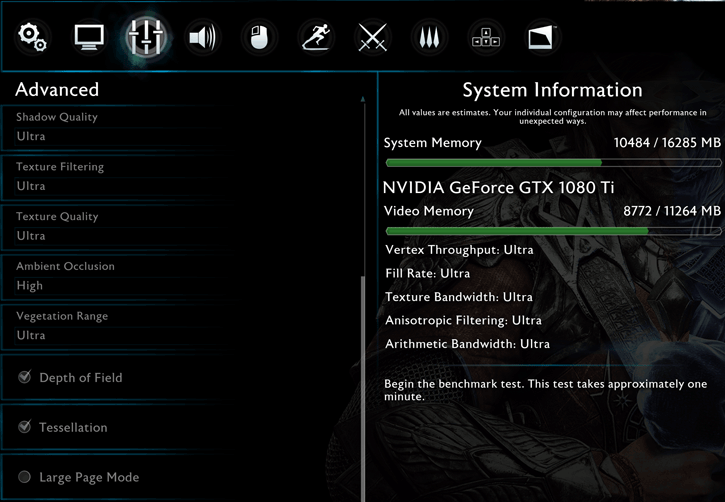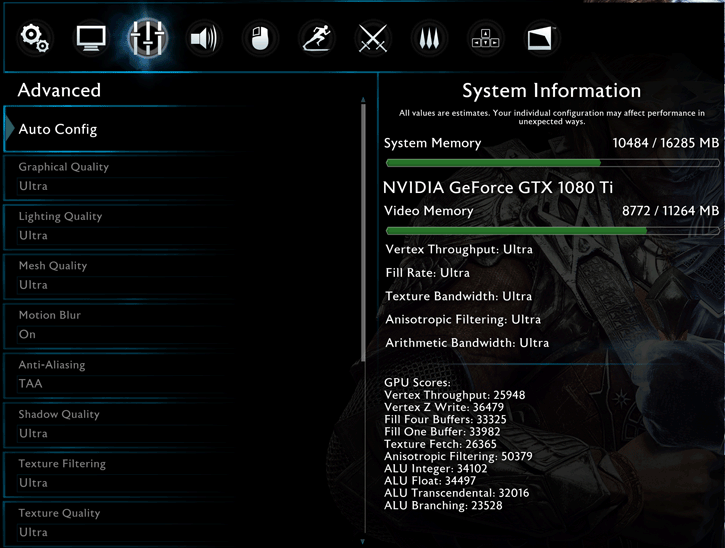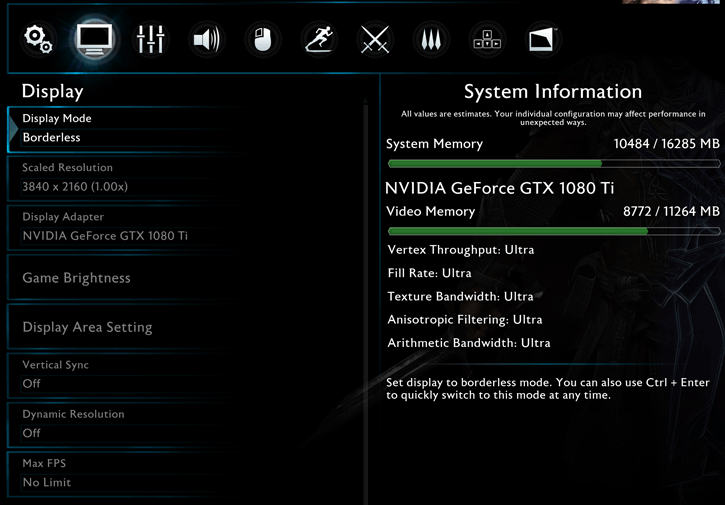Image quality settings and benchmark system
Image quality settings and benchmark system
For this game we use a frametime run with Ultra image quality settings, the highest possible quality mode. We will test a good number of cards in this D3D11 compatible title performance wise. Games typically should be able to run in the 40 FPS range combined with your monitor resolution. From there on-wards you can enable/disable things if you need-more performance or demand even better game rendering quality.
Enable Ultra Quality with High Resolution Textures
Overall you will experience very high to be a nice quality setting for PC gamers on a more mainstream setup. The game allows you to tweak several graphics settings, but has your typical settings ranging from the lowest to the best (Ultra) image quality settings. If you are (and you should) using Ultra Quality mode, then please do not forget to download the Ultra High Resolution Texture Pack (10.5 GB). It really enhances the game with fat more beautiful quality textures, making it look like a proper PC Game, the way you want to play it. We'll use this texture pack and test at Ultra quality
In Steam after you download the game you will see a DLC option called High Resolution Texture Pack - enable and install it.
The graphics cards tested
In this review we'll test the following cards at the best PC experience, a maxed out quality mode (Ultra) with VSYNC OFF. The graphics cards used in this test:
- Geforce GTX 1050 Ti (4GB)
- GeForce GTX 1060 (6GB)
- GeForce GTX 1070
- GeForce GTX 1080
- GeForce GTX 1080 Ti
- GeForce GTX 980 Ti
- NVIDIA Titan X (Pascal)
- Radeon R9 Fury
- Radeon R9 Fury X
- Radeon R9 Nano
- Radeon RX 470 (8GB)
- Radeon RX 480 (8GB)
- Radeon RX 570 (4GB)
- Radeon RX 580 (8GB)
- Radeon RX Vega 56
- Radeon RX Vega 64
System Specifications & recommended drivers
Our test system is based on the eight-core Intel Core i7-5960X Extreme Edition with Haswell-E based setup on the X99 chipset platform. This setup is running tweaked at 4.20 GHz. Next to that we have energy saving functions disabled for this motherboard and processor (to ensure consistent benchmark results). We use Windows 10 all patched up. Each card runs on the same PC with the same operating system clone.
The drivers are:
- GeForce cards use the latest 387.92 WHQL driver (download).
- Radeon graphics cards we used the latest AMD Radeon Crimson 17.10.1 Driver (download).





